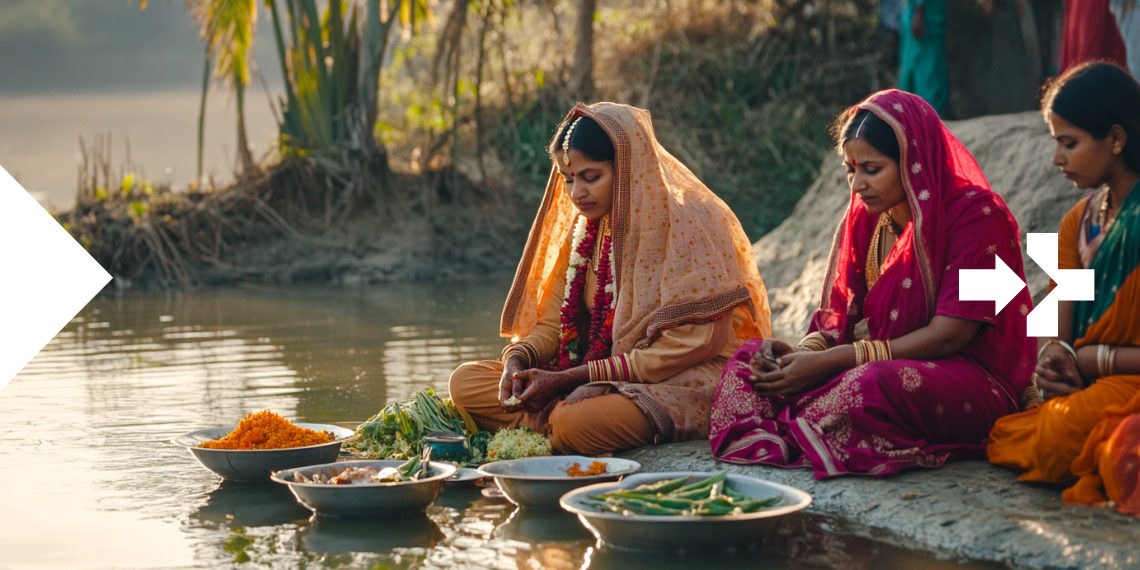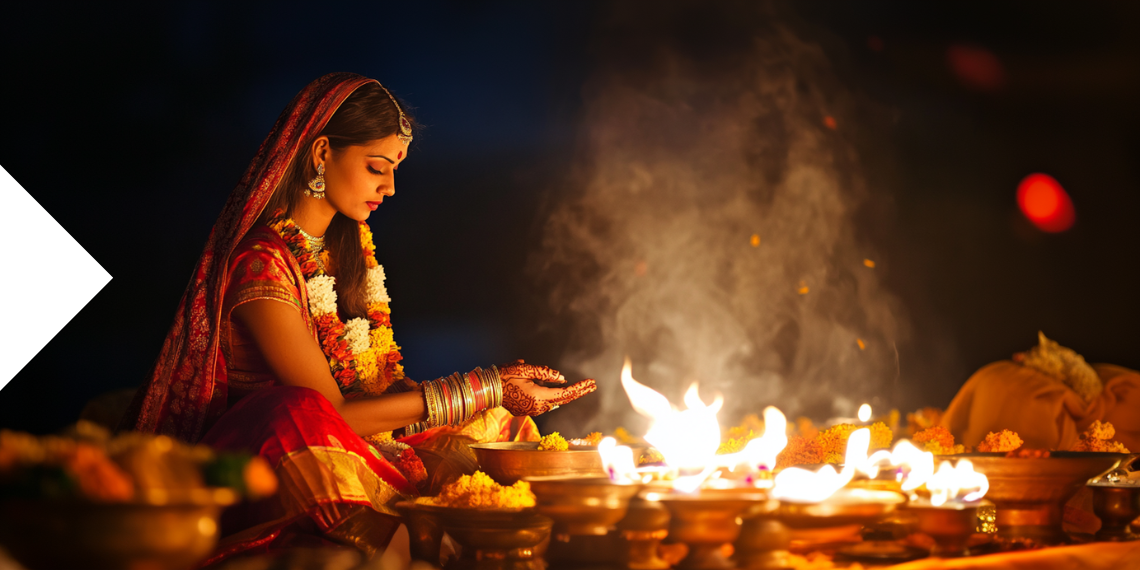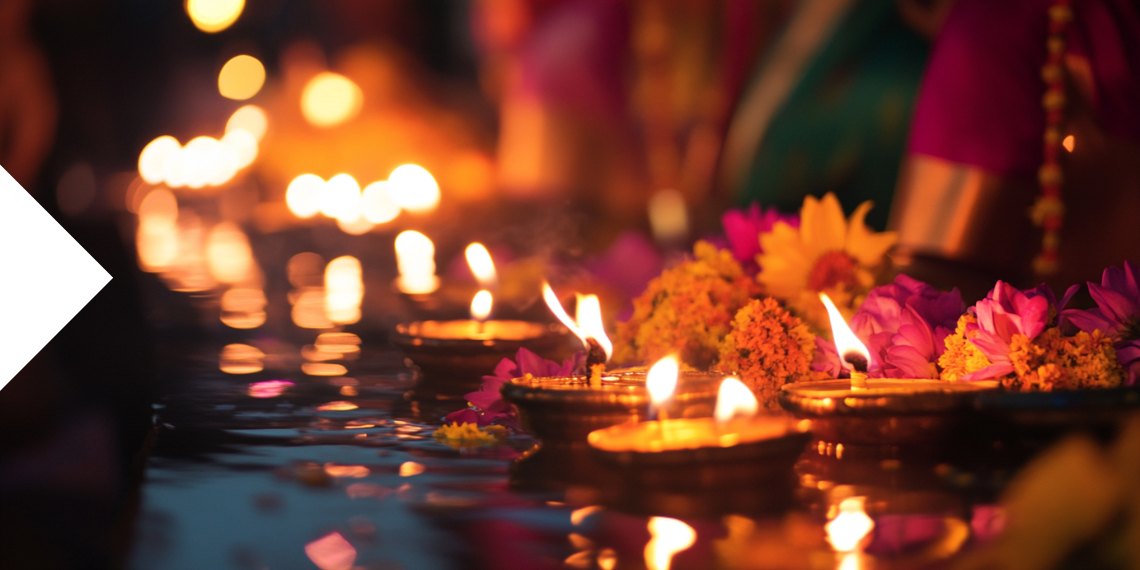{{model.PromotionText}}
-
Money -
Top-Ups -
Gift Cards -
Log In -
Sign Up
Chhath Puja: Celebrating the Sun and Nature in India’s Ancient Tradition Title

-
Categories
-
{{category.Title}}
Write a comment
Chhath Puja: Celebrating the Sun and Nature in India’s Ancient Tradition
Chhath Puja is one of India’s most spiritually significant festivals, celebrated with deep devotion in the states of Bihar, Jharkhand, Uttar Pradesh, and across the Terai region of Nepal. This year, the four-day observance will take place from November 5 to November 8. Dedicated to worshiping Surya, the Sun God, and Chhathi Maiya, the goddess symbolizing nature and motherhood, the festival pays homage to these deities through unique customs and rituals that have been carefully preserved over centuries. Families come together each year, symbolizing harmony with nature and reflecting a rich cultural heritage that endures across generations. For Indian communities worldwide, this celebration is a meaningful way to keep these traditions alive, no matter where they are.
The Historical and Cultural Significance
The origins of Chhath Puja date back to the early Vedic period, when sages and yogis worshiped the sun for its life-giving energy. This festival holds deep mythological significance, with one popular tale linking it to Lord Rama and Sita, who, after returning to Ayodhya from exile, performed the Chhath rituals to honor the Sun God. Another well-known story connects the festival to Karna, the noble warrior from the Mahabharata and son of Surya, who is believed to have been one of its earliest practitioners. These enduring legends reflect the festival’s cultural importance and its significant place within the Hindu tradition.
The Four Days of Chhath Puja: Rituals and Customs
Each of the four days involves distinct rituals that symbolize purity, devotion, and reverence for nature. Devotees observe strict routines, including fasting, bathing in sacred waters, and making offerings to the Sun God, all of which reflect personal discipline and a deep respect for the environment.

Nahay Khay (The Day of Cleansing)
The festival begins with Nahay Khay, a day focused on purification. Devotees take a ritual bath in rivers or other water bodies, symbolizing the cleansing of both body and mind. Afterward, they prepare a simple vegetarian meal, free from onions, garlic, or non-vegetarian items, which they share with family. This process of physical and spiritual cleansing extends to the home, creating a pure space for the days ahead and setting a tone of devotion.
Kharna (The Day of Fasting)
On the second day, Kharna, devotees observe a strict fast from sunrise to sunset, abstaining from food and even water. This rigorous fast is a test of endurance and discipline, paying homage to the sun’s strength and energy. At sunset, the fast is broken with a humble offering, usually consisting of kheer (sweet rice pudding), chapati, and fruits. This "prasad" is shared with family members and neighbors, symbolizing unity, humility, and gratitude for the essentials of life.
Sandhya Arghya (Offering to the Setting Sun)
The third day, Sandhya Arghya, is the most significant part of Chhath Puja. Families gather at riverbanks or ponds to offer prayers to the setting sun. Women, dressed in vibrant traditional attire, carry baskets filled with offerings such as fruits, thekua (a traditional sweet made from wheat and jaggery), and seasonal vegetables. Standing in waist-deep water, they raise their hands in reverence, offering water to the Sun God. The sight of devotees bathed in the glow of the setting sun creates a deeply spiritual atmosphere. As they sing hymns and devotional songs, families join together to express gratitude for the year’s blessings.
Usha Arghya (Offering to the Rising Sun)
On the final day, devotees return to the water at dawn for Usha Arghya, an offering to the rising sun. This morning ritual represents renewal, hope, and continued blessings for health and prosperity. Devotees once again offer fruits, thekua, and other carefully prepared items, reinforcing their gratitude and faith. With this closing ritual, the four-day observance concludes, leaving a sense of peace, spiritual renewal, and strengthened family bonds.
The Traditional Foods and Offerings
The culinary traditions of Chhath Puja add a unique flavor to the celebration, with thekua being one of the most iconic offerings. Made from wheat flour, jaggery, and ghee, this sweet and crispy treat is sometimes flavored with coconut or cardamom and is prepared in large quantities by families who come together to share in its creation. Thekua symbolizes devotion and community, as families gather to make and distribute it as part of their prayers.

Other offerings include fruits, especially bananas and coconuts, which are seen as symbols of fertility and prosperity, as well as rice-based dishes like kheer and puris (fried bread). These foods reflect the simplicity and humility of the festival, prepared with minimal ingredients that honor the purity and spiritual essence of Chhath. Each item has symbolic significance, with fruits representing health and abundance, and thekua embodying shared devotion. Preparing these foods is a cherished communal activity that strengthens family bonds and upholds recipes passed down through generations.
The Eco-Friendly Practices and Environmental Responsibility
In recent years, Chhath Puja has gained recognition not only as a deeply spiritual festival but also as a model for eco-friendly practices. Devotees avoid using plastics and other non-biodegradable materials during rituals, instead opting for natural, biodegradable items such as bamboo baskets and clay pots. This respect for nature aligns with the festival’s core principles, emphasizing the importance of honoring and protecting the environment.
Beyond personal spirituality, it serves as a reminder of the responsibility to care for nature and preserve it for future generations. In a world increasingly focused on sustainability and ecological awareness, the festival resonates as both a religious ceremony and a celebration of environmental consciousness, highlighting the cultural values of sustainability and harmony with nature.
Uniting Indian Communities Around the World
Although is traditionally celebrated in India and Nepal, it has become a global tradition among Indian communities worldwide. From the United States to the United Kingdom, families gather at local rivers, lakes, or beaches to perform rituals, preserving a strong cultural connection despite geographical distances. This dedication underscores the festival’s significance for those who celebrate it, wherever they may be.
Chhath Puja is more than a religious ritual; it is a celebration of family, unity, and community. The communal nature of the festival brings people together, reinforcing bonds and shared values. Every activity, from cleaning the house to preparing traditional dishes and organizing group prayers, involves collective effort and participation. These customs encourage togetherness, with each family member playing a role in the preparations. The festival embodies the spirit of unity, reminding participants of their cultural heritage and strengthening their connection to family and community.
For those who cannot physically be together, the need for connectivity is of utmost priority during Chhath Puja. That is why we at sendvalu guarantee that our services act as a bridge by letting the separated ones abroad support their families quickly and reliably. With money transfers, mobile top-up options, and even gift cards, sendvalu makes it simple to take care of loved ones during these days. At the same time, flexible modes of payment allow our users to choose what will suit their demands best.
A Beacon of Faith, Tradition, and Family Bonding

Chhath Puja is the power of faith and cultural belief in a fast world of changes. The simple, deep-rooted rituals speak of being attached to nature, respect for ancient customs, and commitment to purity, gratitude, and environmental awareness. Devotees employ all these values every year in the practice so that this beautiful tradition can flourish and pass on timeless cultural and spiritual wisdom to future generations.
It is one of the oldest festivals celebrated in the month of Kartik, holding a special place among devotees as it unites family and community in shared devotion and purpose. Whether observed along the banks of the Ganges or by a lake abroad, the festival transcends borders, reconnecting people with their roots and reinforcing the strength of their faith.
It is with such services as sendvalu that the distance separating the families can be bridged, hence allowing loved ones to share in the joys and blessings even from afar. We help keep families connected by providing a safe and efficient way of sending support; thus, a sense of unity, gratitude, and hope transcends across continents, bridging people with shared traditions and values.



Any Questions?
We are more than happy to help you!Help & Support
Company
¹ All delivery times are based on average transaction times over the last three months. Please note that due to verification policies, new customers may experience longer delivery times. ² Prices might vary based on selection of payout option.
Send money worldwide
© Copyright 2025 AWS Malta Ltd.
Follow us:


Leave a comment